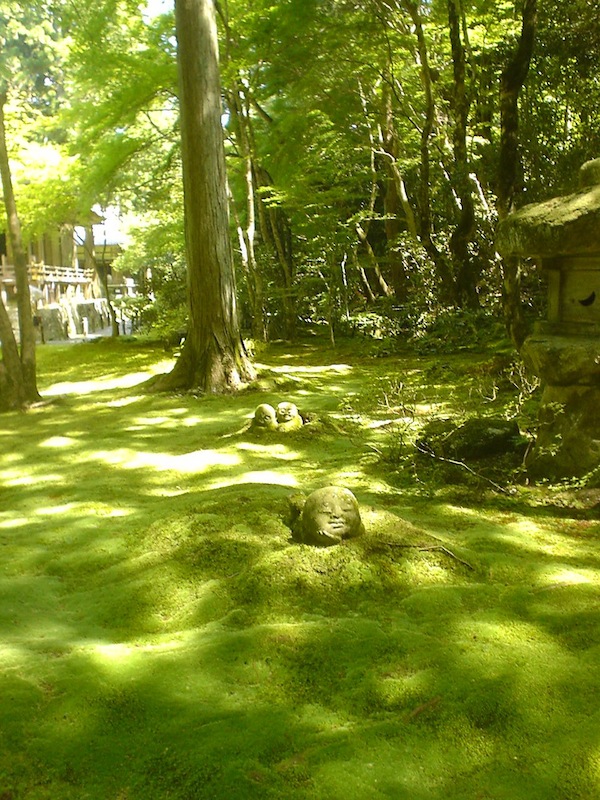
Haiku is a literary form. It carries ideological elements from its history as other literary forms do. Some of these elements are deeply ingrained in the genre. For example, seasonal themes and objective descriptions are the two main principles many people in Japan and in other countries believe to be imperatives. While they surely have some relevance (as they help beginners find concrete images and avoid various pitfalls), they are not absolutely necessary conditions for haiku.
In the 1930s the avant-garde movement of Shinkô Haiku (新興俳句; New Wave Haiku) gained momentum. SHINOHARA Hôsaku (篠原鳳作; 1906-1936) led the movement toward muki haiku (haiku without seasonal themes) with his acute sensitivity:
しんしんと肺碧きまで海のたび
Shinshin to / hai aoki made / umi no tabi
Coolness comes in
until my lung is blue –
a long voyage手に足に青空染むと日向ぼこ
Te ni ashi ni / aozora shimu to / hinataboko
The blue sky soaks
into my arms and legsbasked in the sun
昇降機吸はれゆきたる坑にほふ
Shôkôki / suware yukitaru / ana niou
The mine pit has sucked
an elevator in
giving a strong smell
Seasonal themes are important for haiku mainly because they provide a common frame of reference, without which it is hard for a short form like haiku to take effect on readers. In Shinohara’s non-seasonal haiku a frame of reference is provided as bodily sensation. In the first example the ocean (outside) permeates the lung (inside); in the second the sky interpenetrates the limbs. This kind of penetration leaves a strong impression on readers, with some sense of anxiety. Here nature takes a completely different form than in haiku with stable seasonal references. It is an absolute Other, which nevertheless asserts an ultimate oneness with us, like death (Shinohara died young, at thirty).
Another Shinkô-Haiku writer SAITÔ Sanki (西東三鬼; 1900-62) also left a lot of muki haiku. Like Shinohara his main frame of reference is bodily sensation, but his verses give us quite a different impression:
逃げても軍鶏に西日がべたべたと
Nigete mo / shamo ni nishibi ga / betabeta to
Trying to escape
a gamecock is followed
by the sticky evening sun秋の暮大魚の骨を海が引く
Aki no kure / Taigyo no hone wo / umi ga hiku
Late autumn –
the ocean tugs the bones
of a giant fish広島や卵食ふとき口ひらく
Hiroshima ya / Tamago kû toki / kuchi hiraku
Hiroshima –
you open your mouth
to eat an egg
Shinohara’s works resonate with the inevitability of death whereas Saitô’s always show an excess of life. Dead things like the bones of a giant fish are not allowed to rest, disturbed by unlimited life force in this world. Even the tragedy of Hiroshima transforms into intense life experience through a suggestion of our unappeasable appetite. Shinohara’s, Saitô’s and many other non-seasonal haijin’s works deeply move us by rousing anxiety from the inevitable conditions of our being in this world.
Other New Wave Haijin took another route to achieve originality. WATANABE Hakusen (渡邊白泉; 1906-1969) is exceptional in that his haiku have a strong penchant for social criticism. His works reflect the aggravating contemporary political conditions before WWII:
戦争が廊下の奥に立つてゐた
Sensô ga / rôka no oku ni / tatteita
War was standing
at the bottom
of the hallway銃後といふ不思議な町を丘で見た
Jûgo to iu / fushigina machi wo / oka de mita
I saw a strange town
called the civilian front
upon a hill繃帯を巻かれ巨大な兵となる
Hôtai wo / makare kyodaina / hei to naru
Wrapped in bandage
& turned into
a gigantic soldier
Surrealistic imagery enables Shinohara to get over simplistic condemnation of the war. Far from just accusing others of war crimes from a safety zone, his haiku makes us aware that our position away from battle fields can be part of the overall war situation. (Well, that is so up-to-date: Isn’t our peace always the shadow of the war?)









